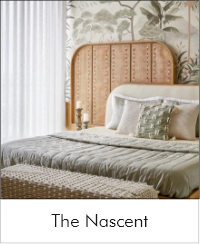India was always destined to gift the world an unparalleled design legacy.
Each of its 28 states have a distinct language and religious-cultural identity, almost unseen in other countries of the world. From the Mughals in Persia, to the Portuguese and then the English during British Raj, over the centuries India’s design sensibilities have been influenced and inspired by cultures unlike its indigenous ones, producing a unique design language on the world map.

India’s design revolution has been long underway
Yet the sub-continent like the rest of Asia, for decades has been kept in the shadow of Europe as a global design capital.
Even as luxury fashion powerhouses from Dior, Hermès, Gucci, Prada to Versace continue to use Indian artisans in the production of their goods.
It was only in 2020, that the Business Of Fashion (BOF) and The New York Times revealed luxury fashion’s hidden Indian supply chain. Modern consumers were finally informed that some of the exquisite handwork seen on the world’s catwalks and red carpets passes through the deft hands of India’s most skilled embroiderers or karigars.
BOF reports that “enormous cachet is attached to the European provenance of many luxury brands, but few have gone public to reveal which parts of their production line are outsourced to craftspeople beyond Europe. Instead it is left to the Indian atelier owners to declare their famous clients and to reveal that some of the current business relationships between the fashion capitals and India have been going strong since the early 1990s.”
It’s true that “beautiful craft-making still exists in Europe, but the numbers are fast dwindling and cannot be compared with the artisanal breadth and volume that India offer” Karishma Swali, managing director of Chanakya, whose Mumbai-based export atelier has produced embroideries for brands including Dior, Versace, Saint Laurent, Balmain, Giambattista Valli, Prada, Valentino, Céline, Gucci and Loewe, told BOF.”
“India held a key role in the development of European luxury from the 17th century onwards, but the country’s low cost of labor and recent reputation as a cheap exporter of garments for the fast fashion sector overshadowed it’s contributions to the world’s most enviable designs in haute couture.”

The Christian Dior pre-fall 2023 show in Mumbai on March 31, 2023. Photo Courtesy of Christian Dior
David Birnbaum, a guru in the garment export industry is sure that change is underway. He feels that as Asian fashion consumers see their local designers as alternatives to European fashion labels (Sabyasachi has already made the sari haute), imports will become limited from European brands.
“Who will be the next Asian design powerhouse? My bet is India.” - David Birnbaum, Managing Director, Third Horizon Limited
Birnbaum attributes his stakes in India to several factors.
India’s unique design and color sensibilities are powered by 200 million artisans whose skills have been passed down through generations.
Rich textile development – 95% of the world’s handwoven fabrics come from India.
As India’s affluent class steadily rises, lifestyle inflation beats essentials in the country; suggesting a mature design-ready domestic market.
India possesses a huge young workforce that offers the lowest manufacturing wage cost is another added advantage.
India’s young & talented design studios are mushrooming
India as the next design destination is not just a theory but a living reality.
Over the past decade, from fashion to lifestyle, young Indian entrepreneurs and designers have changed the face of design in India. They are using the country’s design legacy and traditional craftsmanship and tailoring it for global modern sensibilities.

Bzaar curated a list of 16 (though there are plenty more!) Indian lifestyle design powerhouses across India, most of which produce at scale and ship internationally.
There is Mumbai’s much-loved Nicobar whose designs move away from trends to reflect India’s cultural aesthetics through modern functionality.
Some of the brands on our list have committed to one sole traditional material.
Studio Coppre uses only copper to revive this ancient craftsmanship through modern silhouettes. While Mianzi’s products are made through the richness of bamboo craft and molded by the expertise of heritage artisans.
Young and modern design studios in India are committed to re-inventing these ancient crafts. Like Rias Jaipur which designs its products with two distinct ancient hand block printing methods onto handwoven fabrics. Osmos Studio, on the hand goes a step further and looks to Japanese and Scandinavian design to create ceramics, handcrafted by Indian artisans.
Design to delivery, now in India
This community of talented young designers in India, who bring their cultural heritage mixed with global exposure to their work, only continues to mushroom over time. Making India no longer just a hub of abundant skill and labor, but a superior design destination in its own right. The different styles of crafts available in India have already made the sub-continent the largest producer of handmade goods.
As the manufacturing migration steadily moves towards India, Western retailers have the opportunity to receive end-to-end delivery of their products from one single location – India. Making production far more cost and time effective.
Payal Mohta is a freelance content writer, editor, and strategist. She writes about everything business and tech.
















Commentaires